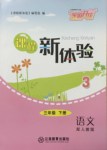题目内容
Photography has been my interest ever since I was old enough to pick up a camera, but today I want to share with you the 15 most treasured photos of mine, and I didn’t take any of them. There were no art directors, no stylists, no chance for reshoots, not even any regard for lighting. In fact, most of them were taken by random tourists.
My story begins when I was in New York City for a speech, and my wife took a picture of me holding my daughter on her first birthday. We’re on the corner of the 57th and 5th avenue. We happened to be back in New York exactly a year later, so we decided to take the same picture.
Well you can see where this is going. Approaching my daughter’s third birthday, my wife said, “Hey, why don’t you take Sabina back to New York and make it a father-daughter trip, and continue the ceremony?” This is when we started asking passing tourists to take the picture.
So these photos are far more than representatives for a single moment, or even a specific trip. They’re also ways for us to freeze time for one week in October and reflect on our times and how we change from year to year, and nor just physically, but in every way. Because while we take the same photo, our viewpoints change, and she reaches new milestones and I get to see life through her eyes, and how she communicates with and sees everything. This very focused time we get to spend together is something we value and expect the entire year.
1.What can we know about the author from the first paragraph?
A. He is fond of being photographed alone.
B. He hardly ever asks strangers to take pictures of him.
C. He has been interested in photography since childhood.
D. He’s proud of the 15 most treasured photos taken by himself.
2.Who came up with the idea of having a father-daughter trip when Sabina was 3 years old?
A. Her mother. B. Her father.
C. Sabina herself D. An unknown tourist.
3.It can be inferred from the last paragraph that .
A. children usually get to see life through adults’ eyes
B. the 15 photos are meaningful to the author’s family
C. it takes the author a whole week to have a family photo taken
D. the viewpoints of the author’s family never change with the time.
4.What can be the best title of the text?
A. Believe it or not; photos do change
B. Photos help a family become rich
C. Even strangers can help take photographs
D. A father-daughter bond, one photo at a time
 芝麻开花课程新体验系列答案
芝麻开花课程新体验系列答案

 ),并在其下面写出该加的词。
),并在其下面写出该加的词。